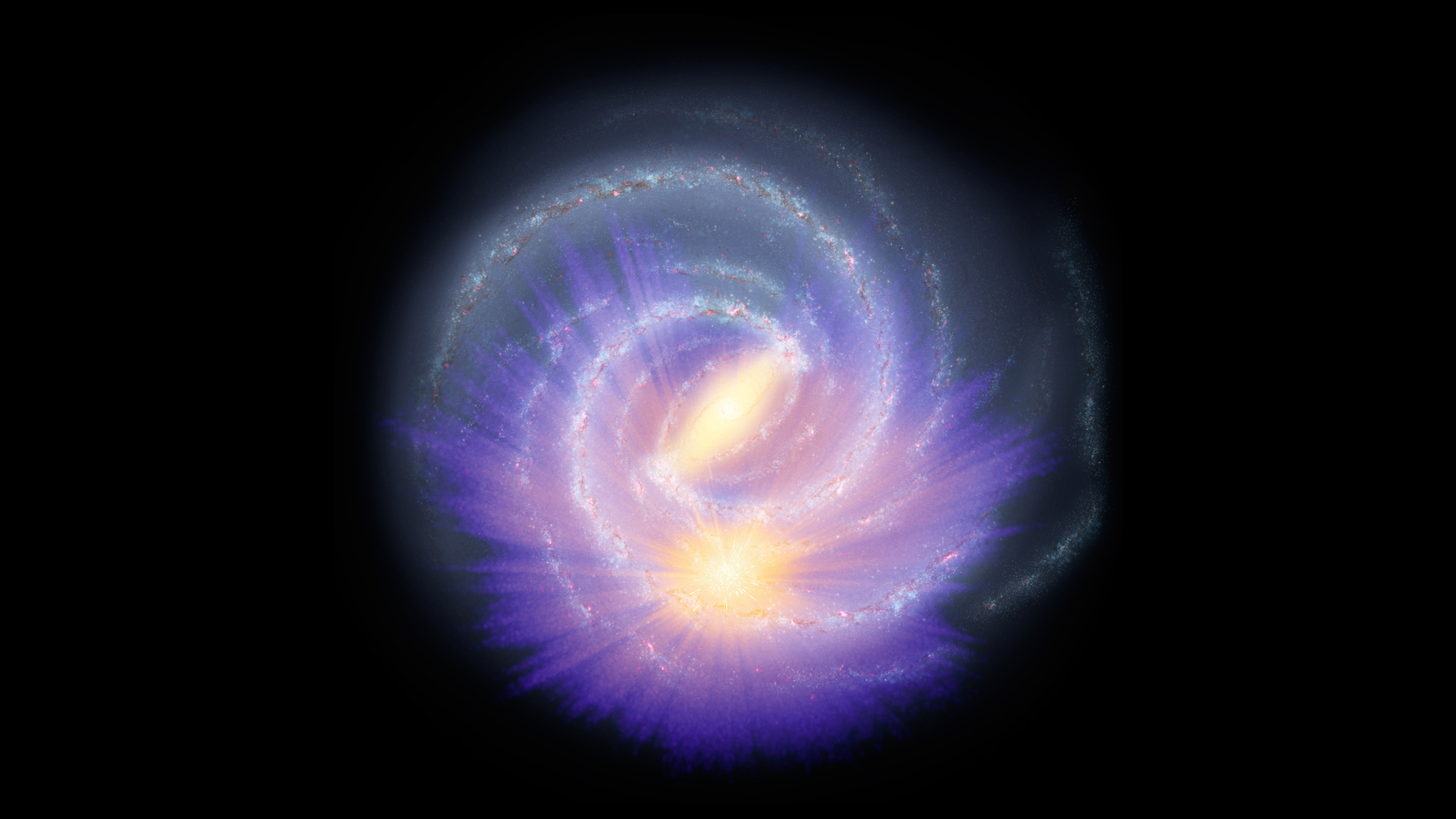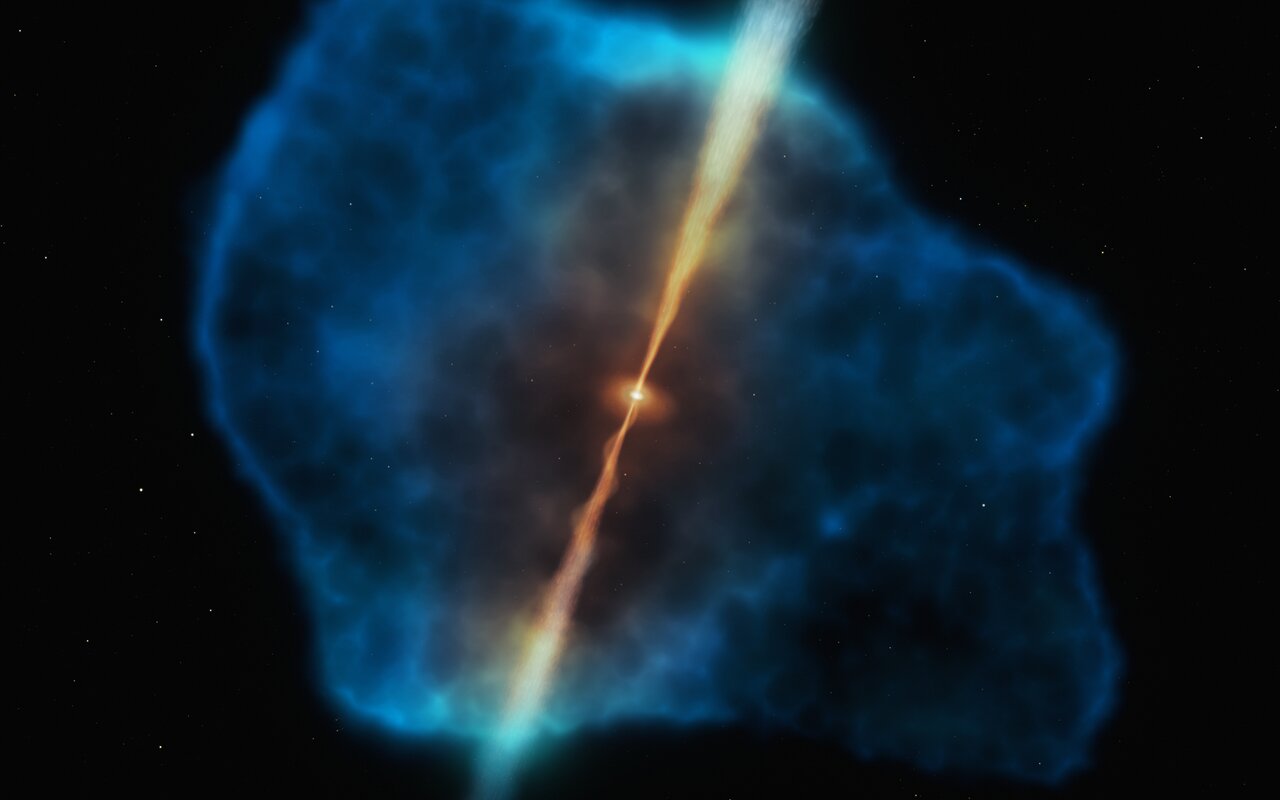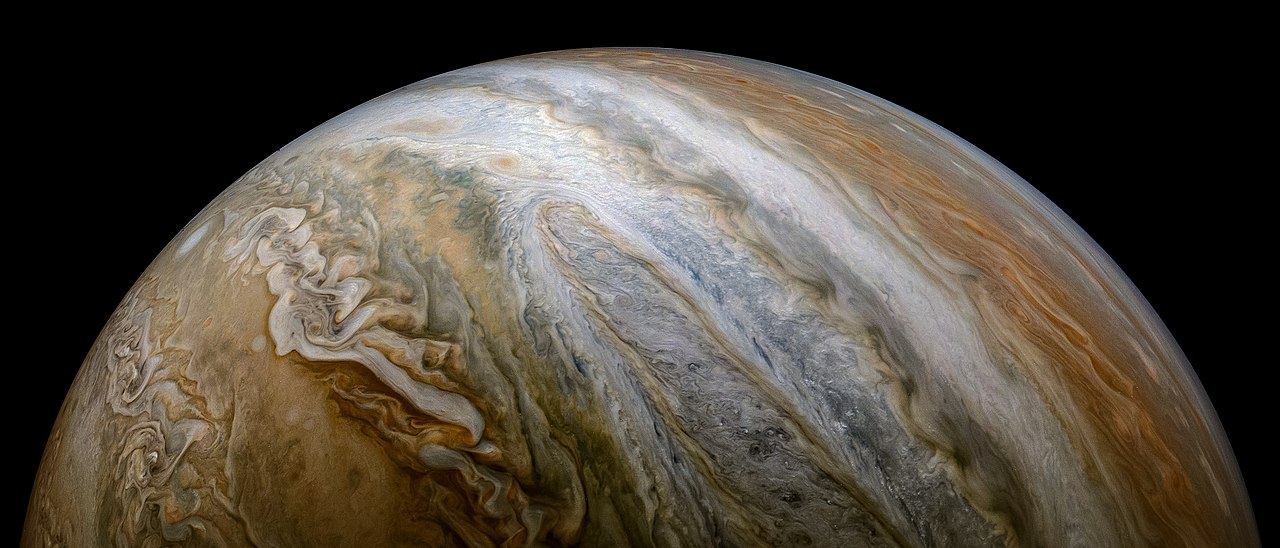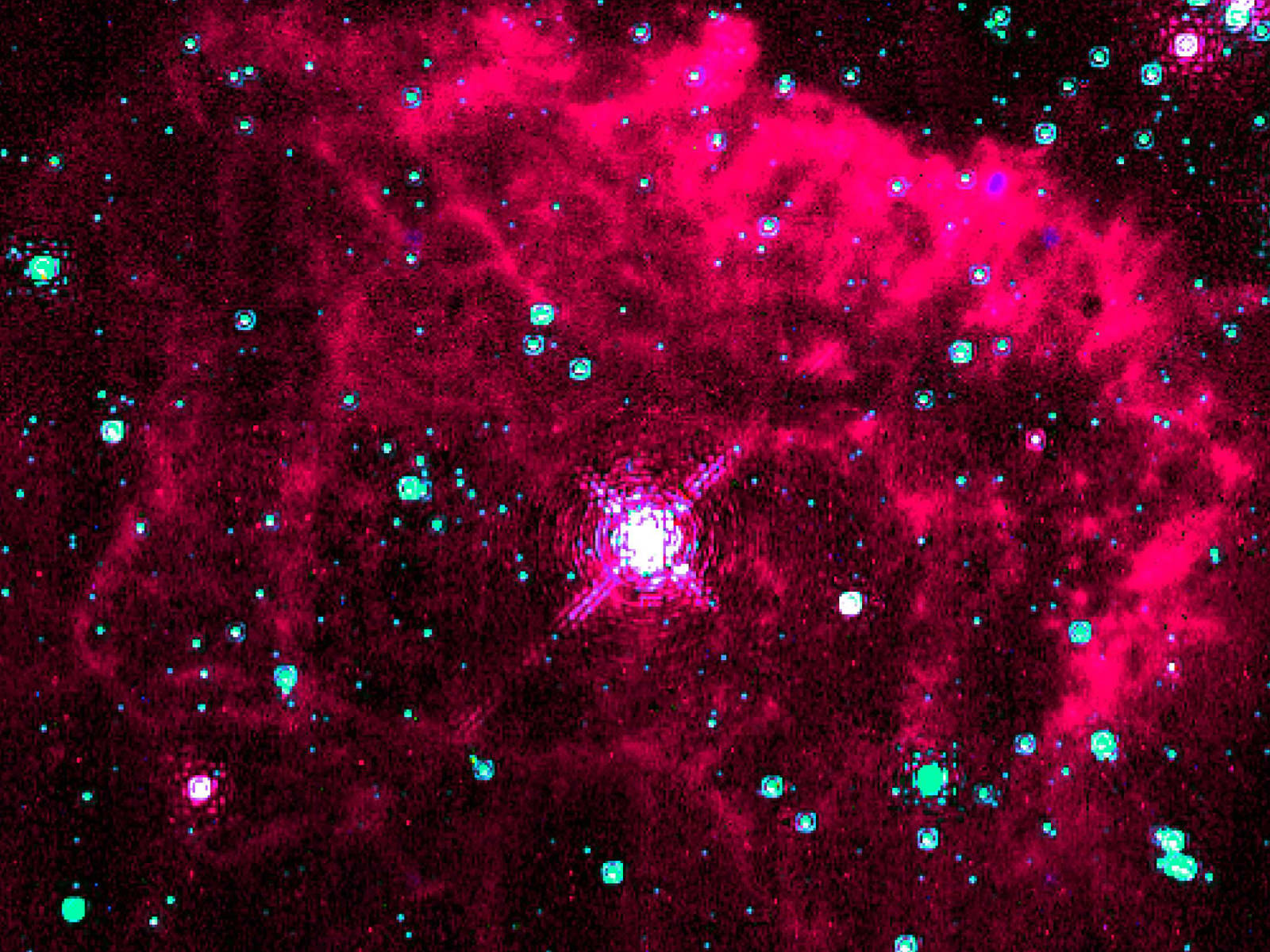We don’t quite understand how the first supermassive black holes formed so quickly in the young universe. So a team of physicists are proposing a radical idea. Instead of forming black holes through the usual death-of-a-massive-start route, instead giant dark matter halos directly collapsed, forming the seeds of the first great black holes.
Continue reading “How did Supermassive Black Holes Form? Collapsing Dark Matter Halos can Explain Them”The Milky Way’s Central bar Spin-Rate is Slowing Down Thanks to Dark Matter

If it were’t for an enormous halo of dark matter enveloping our galaxy, the spin-rate of our central bar should stay pretty constant. But researchers have recently inferred that it has slowed down by almost 25% since its formation, a clear sign of the presence of dark matter.
Continue reading “The Milky Way’s Central bar Spin-Rate is Slowing Down Thanks to Dark Matter”Dark Energy Survey is out. 29 Papers Covering 226 Million Galaxies Across 7 Billion Light-Years of Space
Cosmology is now stranger to large scale surveys. The discipline prides itself on data collection, and when the data it is collecting is about galaxies that are billions of years old its easy to see why more data would be better. Now, with a flurry of 29 new papers, the partial results from the largest cosmological survey ever – the Dark Energy Survey (DES) – have been released. And it largely confirms what we already knew.
Continue reading “Dark Energy Survey is out. 29 Papers Covering 226 Million Galaxies Across 7 Billion Light-Years of Space”A Dark Matter map of our Local Cosmic Neighborhood
Since it was first theorized in the 1970s, astrophysicists and cosmologists have done their best to resolve the mystery that is Dark Matter. This invisible mass is believed to make up 85% of the matter in the Universe and accounts for 27% of its mass-energy density. But more than that, it also provides the large-scale skeletal structure of the Universe (the cosmic web), which dictates the motions of galaxies and material because of its gravitational influence.
Unfortunately, the mysterious nature of Dark Matter means that astronomers cannot study it directly, thus prevented them from measuring its distribution. However, it is possible to infer its distribution based on the observable influence its gravity has on local galaxies and other celestial objects. Using cutting-edge machine-learning techniques, a team of Korean-American astrophysicists was able to produce the most detailed map yet of the local Universe that shows what the “cosmic web” looks like.
Continue reading “A Dark Matter map of our Local Cosmic Neighborhood”New All-Sky Map of the Milky Way’s Galactic Halo
The outer reaches of the Milky Way galaxy are a different place. Stars are much harder to come by, with most of this “galactic halo” being made up of empty space. But scientists theorize that there is an abundance of one particular thing in this desolate area – dark matter. Now, a team from Harvard and the University of Arizona (UA) spent some time studying and modeling one of the galaxy’s nearest neighbors to try to tease out more information about that dark matter, and as a result came up with an all new way to look at the halo itself.
Continue reading “New All-Sky Map of the Milky Way’s Galactic Halo”Jupiter Could Make an Ideal Dark Matter Detector
So, you want to find dark matter, but you don’t know where to look? A giant planet might be exactly the kind of particle detector you need! Luckily, our solar system just happens to have a couple of them available, and the biggest and closest is Jupiter. Researchers Rebecca Leane (Stanford) and Tim Linden (Stockholm) released a paper this week describing how the gas giant just might hold the key to finding the elusive dark matter.
Continue reading “Jupiter Could Make an Ideal Dark Matter Detector”Is Dark Matter Responsible for Extra Gamma Rays Coming From the Center of the Milky Way?
For years astronomers have puzzled over a strange excess of gamma rays coming from the galactic center. Annihilating dark matter has always been a tantalizing explanation, and new research claims that it’s the best answer.
Continue reading “Is Dark Matter Responsible for Extra Gamma Rays Coming From the Center of the Milky Way?”Did Supermassive Black Holes Form Directly From Dark Matter?

Supermassive black holes are just a little bit too supermassive – astronomers have difficulty explaining how they got so big so quickly in the early universe. So maybe it’s time for a new idea: perhaps giant black holes formed directly from dark matter.
Continue reading “Did Supermassive Black Holes Form Directly From Dark Matter?”An Exotic Explanation for the Most Extreme Gravitational Wave Detected so far
In May of 2019, the gravitational wave observatories LIGO and Virgo detected the merger of two black holes. One had a mass of 85 Suns, while the other was 66 solar masses. The event was named GW190521 and was the largest merger yet observed. It produced a 142 solar mass black hole, making it the first gravitational wave observation of an intermediate mass black hole. But the event also raised several questions.
Continue reading “An Exotic Explanation for the Most Extreme Gravitational Wave Detected so far”A New Technique to Find Cold Gas Streams That Might Make up the Missing (Normal) Matter in the Universe
Where is all the missing matter? That question has plagued astronomers for decades, because the Universe looks emptier than it should, given current theories about its makeup. Most of the Universe (70%) appears to be composed of Dark Energy, the mysterious force which is causing the Universe’s rate of expansion to increase. Another 25% of the Universe is Dark Matter, an unknown substance which cannot be seen, but has been theorized to explain the otherwise inexplicable gravitational forces which govern the formation of galaxies. That leaves Baryonic Matter – all the normal ‘stuff’ like you, me, the trees, the planets, and the stars – to make up just 5% of the Universe. But when astronomers look out into the sky, there doesn’t even seem to be enough normal matter to make up 5%. Some of the normal matter is missing!
Continue reading “A New Technique to Find Cold Gas Streams That Might Make up the Missing (Normal) Matter in the Universe”







